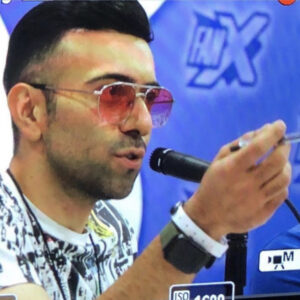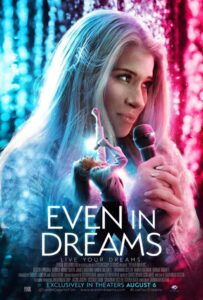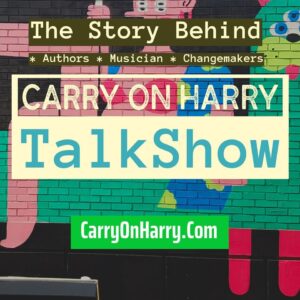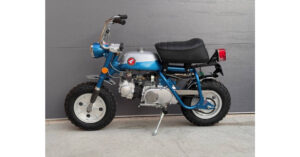Interviews
From War-Torn Iran to Hollywood: A Filmmaker’s Journey with Sohrab Mirmont
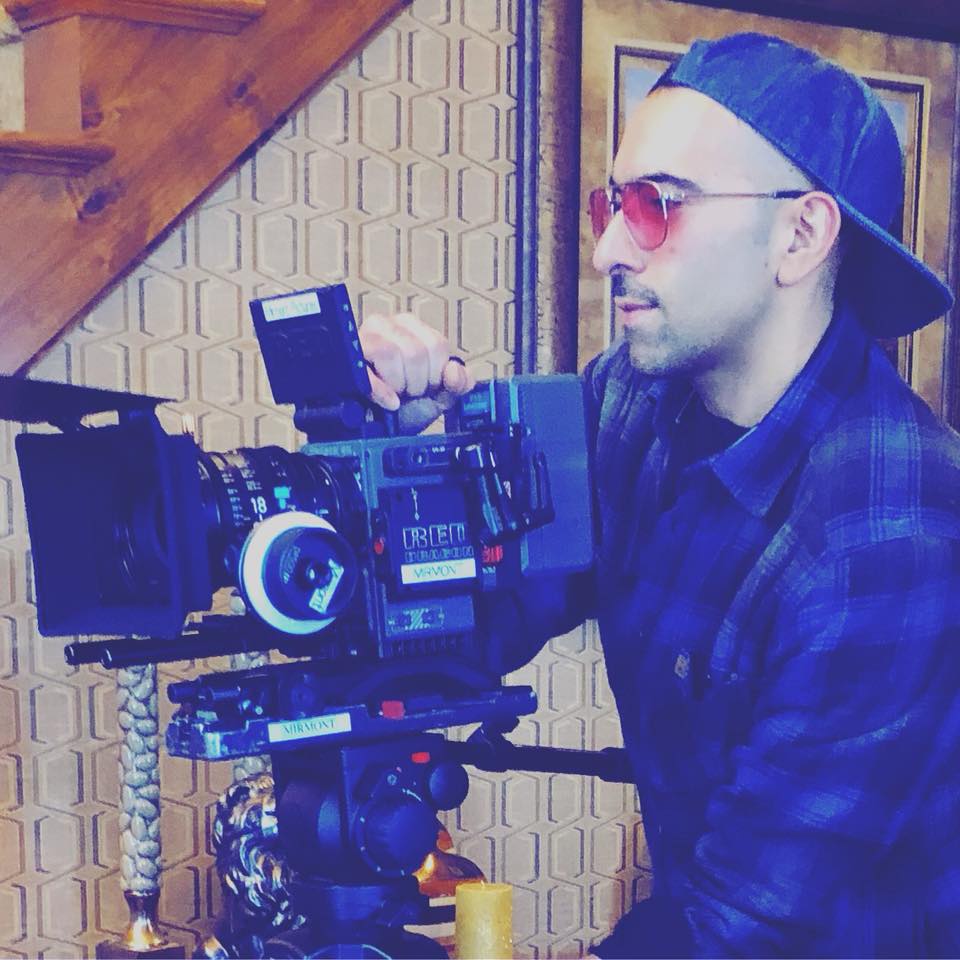
Studio Carry On Harry : Sohrab Mirmont, a talented filmmaker hailing from Iran. Sohrab has had a fascinating journey, growing up in the midst of a political revolution and war, to becoming a successful filmmaker in Hollywood. He will be sharing his story of how his uncle, the famous film director Abbas Kiarostami, influenced him at a young age, and how he has used the experiences of his childhood to inform the way he tells stories on screen. Join us as we delve into Sohrab’s journey and discover the inspiration behind his work.
About You and Your background?
“I knew at an early age that I wanted to live a great life– one with purpose and meaning,” I remembered my childhood in Iran, “I witnessed some of the scenes that were engrained in my mind like scenes out of a movie, things you would not normally see as a child were daily occurrences for me, and they inform the way I tell stories today– that life is precious, it could end or change in a matter of moments, and that what we see can impact us, for the good or for the bad.”
“My uncle, Abbas Kiarostami, was an example for me of what was possible. I remember stumbling across his editing room as a child, seeing him working on the computer with a beautiful woman next to him. I did not know at the time what exactly he was doing, I just knew I wanted to do the same thing,” I explained.
“It was later, when we had moved to America that I realized what my uncle does for a living…he was a famous movie director, traveling the world and living the dream. It was then that I decided my job in life…I was 8 years old.”
“From that age onward, I have dedicated myself to becoming a filmmaker. Age 14 was my first project, when I wrote, directed, shot, and edited a short film for an online film competition. I cast my brother-in-law and some friends to play the parts, and I ran the show…it was the beginning,” I said. “Five years later, I received my first paycheck doing camera work for an ABC show called Skating With The Stars. It was the moment I knew I could actually make money doing this, and I haven’t stopped ever since,” I added, “This is my passion, this is my dream and I will do my best to make it happen.”
How do you convince yourself with things that you have to shoot for a film but you actually don’t otherwise believe?
In the beginning, I took every job I could. If I didn’t believe in the project, it didn’t matter…I was poor, and jobs paid the bills. Luckily, I didn’t do too much work I didn’t agree with, and even if there was something I didn’t agree with or didn’t understand, I would make myself learn or understand it in order to do the job well. I don’t think you can do anything well in life if you don’t believe in what you’re doing. Today, I don’t necessarily have to do projects I don’t believe in, and am much pickier when it comes to what I’ll be involved with. Perseverance has put me in this position to be able to choose.
Your Scripting Process ? Your approach to casting ?
My scripting process is simple…write what I know. Whenever I try to do otherwise, I end up struggling. Some call it writers block, I call it writing what you don’t know. When you write from personal experiences, or from things you’ve learned or read, everything flows much easier. This is the way to ensure you don’t write anything that doesn’t work. Because if you know it, it is truth, and no one can argue with truth. My approach to casting starts in the writing. Every character has a face, a voice, a unique story, and an identity that is different than another. This is because each character, again, is based on someone I know–or moreso, based on characteristics of people I know or have experienced throughout my life thus far. Usually, I will write a role for someone I actually have in mind, and hope that I can actually get that person to play the part when the time comes.
How much does your life influences your story telling and the characters that you bring to life ?
Everything in my life influences my story-telling and the characters I bring to life. I can’t write anything I don’t know and feel like I have authority over the story. My unique experiences, just like everyone else, informs the way I act every day. When it comes to creating art, that process comes from within oneself. If it does not, then it is not truly art or unique to the individual who created it. Usually, if you look at the body of work of any director, each film will tell you a little something about where they were at the time of making that film. Filmmaking is a form of therapy for writers and directors, because we take what is inside of us and put it out for everyone to see…any other way of doing it is cheating yourself and the people you’re sharing your work with.
How do you work on yourself to become better in your field learning , observing , reading ? Type of things you keep yourself involved with
If you want to be a great actor, don’t study acting…study everything else but acting. Because, how else will you be able to play an accountant, or a farmer, or a philosopher, if you don’t go out and learn about those things, or befriend those types of people and build relationships with all sorts of humans? You need life experience to be a great filmmaker– studying the craft is one part, but growing as a human is the greatest part of the puzzle.
To continue growing as a human is one of our main missions in life– you have to read, make new friends, travel (a lot!), experience new cultures, and most importantly, you have to be willing to be wrong. Be willing to be wrong about what you believe in, and go out to face the things you fear…Many are afraid to wander outside of their beliefs, and this is limiting. I try to be as open as possible, and understand different viewpoints. After all, if you only speak one language, you only understand one language.
Filmmaking is team work. Tell us about your team and what sort of preplanning gets done before you decide to make a film.
Tough things about making films and what keeps you going despite those tough things ?
The team at home is most important. What I mean by that is, your support system in your direct environment is what enables or disables you to do the proper prep work needed to get creating in the first place. If you’re a screenwriter, sitting at home in an undesirable situation trying to write, will only produce undesirables results. You first need to get your home-team in order, and then worry about the filmmaking team.
Making films require people who are like-minded, not like-skilled. You have to surround yourself with a team that will enable you to achieve your goals, while they themselves also achieve their goals. It has to be full circle, otherwise there will be sabotage, jealousy, manipulation, and bad feelings. Throughout the years, you discover who your true allies are, and that’s what it takes…years of experience to help you find who you are, and who your friends/teammates are.
Title Of Your New Release
LIMONE
What is the central theme of film ?
Can’t discuss the details of the film yet, it’s under wraps.
how many days it took you to shoot ? What locations it has been shot at ?
We are still in pre-production, but we are filming in the beautiful canals of Venice, Italy.
Share your thoughts about production process. Any interesting trivia about its making?
TBD
What platforms will the film be released? Date of release?
We anticipate a world-release for the film, on every platform imaginable.
Any other project you are working on ? Some details about the film ?
Creating feature films is my passion, but I also own an advertising agency and production company hybrid called Mirmont Pictures. We’ve created ad campaigns for some of the biggest brands in the world, and continue to do so today.
How do you deal with Negative Feedbacks? How do you stay balanced with Positive Feedback ?
Negative feedback, if constructive, is fantastic and always welcome. If someone is simply saying hate speech, it’s quickly discarded as the person themselves is dealing with their own inner turmoil.
How did you hear about CarryOnHarry ?
My publicist Josh Mitchell referred me.
IMDB Link
https://www.imdb.com/name/nm2040847/?ref_=fn_al_nm_1
Your Official Website
https://www.mirmont.com
Facebook Handle
https://www.facebook.com/smirmont/
Linkedin Handle
https://www.linkedin.com/in/ssmirmont/
Twitter Handle
Y
Interviews
podcasting microphone

Understanding Podcasting Microphones: An In-Depth Guide for Beginners and Professionals
Types of Podcasting Microphones
Dynamic Microphones
Dynamic microphones are the most popular choice for podcasting. They convert sound into electrical signals using a diaphragm, coil, and magnet. These microphones are robust, can handle high sound pressure levels, and require less gain than other types. This makes them excellent for capturing voices in less-than-ideal acoustic environments. The Shure SM7B and the Electro-Voice RE20 are industry standards among podcasters.
Condenser Microphones
Condenser microphones are sensitive and tend to capture a wider frequency range compared to dynamic microphones. They require phantom power to operate and are ideal for capturing subtle vocal nuances, making them great for voice work in studios. Notable condenser microphones include the Audio-Technica AT2020 and the Rode NT1-A, both widely admired for their clarity and depth.
Lavalier Microphones
Lavalier microphones, or lapel mics, are small, clip-on devices ideal for interviews and on-the-go recording. They ensure hands-free operations and are particularly useful for video podcasts. Wireless options add flexibility, allowing hosts to move freely during recordings. Popular choices include the Rode SmartLav+ and the Sennheiser ME 2-II.
USB Microphones
For those looking for simplicity and convenience, USB microphones are perfect. They connect directly to a computer without the need for additional equipment. While they may not deliver the same quality as XLR microphones, models like the Blue Yeti and the Audio-Technica ATR2100x-USB are excellent for beginners and home podcasters.
Important Features of Podcast Microphones
Frequency Response
Frequency response defines how a microphone reacts to different sound frequencies. Most voices fall within the 80Hz to 15kHz range, so a good podcasting microphone should adequately capture this spectrum. A flat frequency response is usually preferable, allowing for a more natural sound.
Polar Patterns
The polar pattern of a microphone determines its sensitivity in various directions. The most commonly used patterns are:
- Cardioid: Ideal for podcasting as it captures sound from the front while minimizing background noise.
- Omnidirectional: Captures sound from all directions, useful for roundtable discussions but picks up more ambient noise.
- Bidirectional: Captures sound from the front and rear, suitable for interviews between two people.
Sensitivity and Sound Pressure Level (SPL)
Sensitivity measures how effectively a microphone converts sound into an electrical signal. A higher sensitivity microphone captures softer sounds without requiring additional gain. Sound pressure level (SPL) measures how loud of a sound the microphone can handle without distortion. Choosing a mic with appropriate SPL ratings is crucial, especially in louder environments.
Essential Accessories for Podcasting Microphones
Pop Filters
Pop filters reduce plosive sounds (like “p” and “b” sounds) that can cause distortion. They are typically made of a screen or foam, which diffuses rapidly moving air before it hits the microphone diaphragm.
Microphone Stands and Boom Arms
Proper positioning is critical for optimal audio capture. Microphone stands and boom arms allow podcasters to adjust their microphone’s position easily while keeping hands free for notes or gestures.
Shock Mounts
Shock mounts prevent vibrations and handling noise from reaching the microphone, ensuring cleaner recordings. They are especially useful when recording in less controlled environments.
Audio Interfaces
For those using XLR microphones, an audio interface is necessary to convert the analog signal into digital for your computer. Popular models include the Focusrite Scarlett 2i2 and the PreSonus AudioBox USB, which provide excellent sound quality and ease of use.
Tips for Choosing the Right Microphone
Define Your Needs
Consider your podcasting style. Are you recording solo, interviews, or panel discussions? The type of conversations you have will dictate your microphone choice.
Budget Considerations
While it’s easy to get carried away with high-end equipment, plenty of budget-friendly microphones offer excellent quality. Determine a budget that allows for good quality without breaking the bank.
Test Before You Buy
Whenever possible, test microphones in-store to find the sound that best suits your voice. Listening to the audio capture can significantly influence your decision.
Read Reviews and Watch Tutorials
Before investing, check online reviews and tutorials. Many YouTube channels offer in-depth sound tests and comparisons to help you make informed choices.
Maintenance and Care for Podcasting Microphones
To extend the lifespan of your microphone, regular maintenance is vital. Here are some key maintenance tips:
- Keep it Clean: Dust and saliva can accumulate and affect sound quality. Use a soft cloth to wipe down your microphone regularly.
- Use Windscreens: For outdoor recording, use a windscreen to prevent wind interference and protect the mic from moisture.
- Store Properly: When not in use, store your microphone in a protective case to prevent physical damage.
Enhancing Your Podcasting Experience
Investing in a good microphone is just the beginning. To fully get the most out of your podcasting experience, include thorough planning, effective editing software, and quality recording space. An acoustically treated room, for example, can significantly reduce background noise and enhance vocal clarity.
Understanding the nuances of podcasting microphones will empower you to make informed decisions that improve your production quality. Armed with the right microphone and accessories, you can deliver a rich audio experience, engage your audience, and elevate your podcasting journey to new heights.
Interviews
Veteran actor Manoj Bajpayee speaks out against the growing influence of PR in Bollywood

From the BalleBalleRadio Entertainment Desk
Manoj Bajpayee, a celebrated actor known for his powerful performances, has recently voiced his concerns regarding the pervasive influence of PR machinery within Bollywood. Bajpayee argues that the industry’s increasing focus on public relations often overshadows genuine acting talent, leading to a skewed perception of success and merit.
Bajpayee’s comments come amidst ongoing debates about the phenomenon of ‘National Crush’ titles and the superficiality of fame. He suggests that such manufactured hype can be detrimental to the careers of trained actors who dedicate themselves to the craft, but may not possess the resources or inclination for extensive self-promotion.
He emphasized the importance of acting prowess over PR stunts, highlighting the potential humiliation faced by actors who have honed their skills through rigorous training, only to be sidelined by individuals prioritizing media visibility. Bajpayee’s own career, alongside that of fellow actor Piyush Mishra, serves as an example of sustained success built on consistent, quality performances rather than fleeting PR campaigns.
For more updates, follow us on https://facebook.com/balleballeradio. Like, Share, Comment!
-

 Editor's Choice2 months ago
Editor's Choice2 months agoRanveer Singh and Deepika Padukone Reunite for New Romantic Comedy
-

 Editor's Choice7 months ago
Editor's Choice7 months agoReview: Rekhachithram (2025) – A Masterful Blend of Mystery and Redemption
-
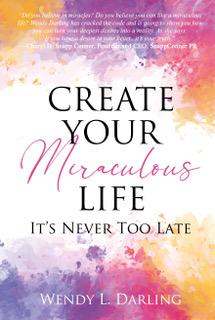
 Authors and Artists4 years ago
Authors and Artists4 years agoCreate Your Miraculous Life: It’s Never Too Late Wendy L. Darling
-

 People's Choice3 months ago
People's Choice3 months agoBollywood in August 2025: A Landscape of Sequels, Social Commentary, and Star Power

